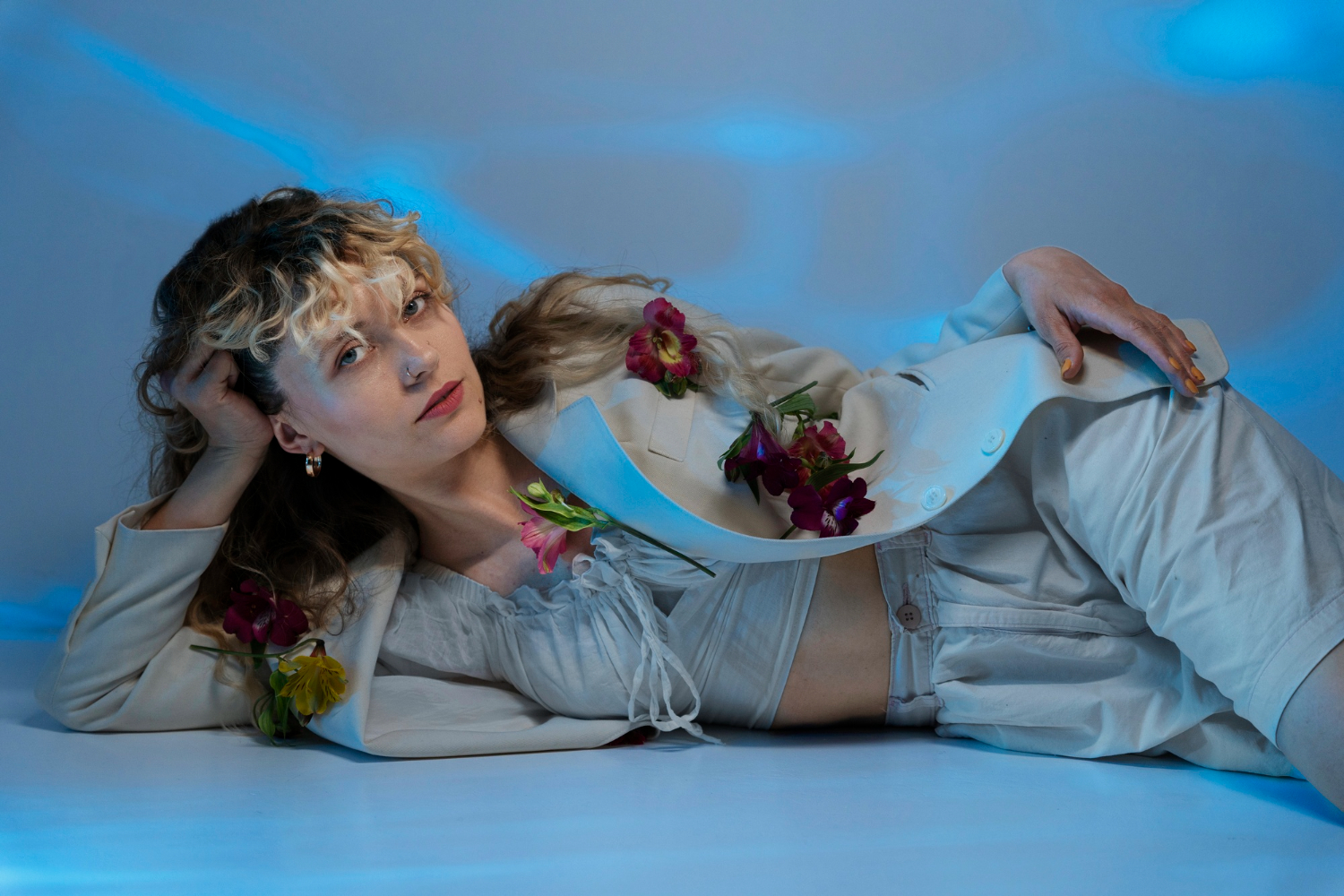Editorial shoots offer a different kind of magic than commercial ones. They lean heavily on storytelling, artistry, and drama, elements that depend as much on body language as they do on styling and photography. When I’m on set for an editorial assignment, I know it’s time to bring movement, emotion, and intention into every frame. Dynamic posing can elevate the entire shoot and allow the story to unfold visually. It’s not about being perfect; it’s about being compelling.
Editorial Photography Is About Expression
Editorial modeling isn’t about selling a product. It’s about creating a mood, channeling a narrative, or embodying a concept. The poses I strike must reflect that. If I walk into a shoot trying to look simply “pretty,” I miss the point. Instead, I focus on what the photographer or art director wants the image to say. A melancholic fashion story might need me to move slowly and fluidly, while a punk-inspired spread might call for bold angles and fierce energy.
These moods guide my physicality. Every tilt of the head, arch of the spine, or extension of the limbs becomes a piece of choreography. I always keep in mind that the pose should move the story forward. That’s what makes it dynamic.
Movement Makes the Shot
Editorial shoots love movement. While I’m not dancing, I am constantly shifting: from subtle weight transfers to full extensions. The trick is to keep energy flowing through the body, even when standing still. I keep my limbs loose and my posture active. I might imagine I’m walking through water or pushing against invisible resistance. That tension adds life to the frame.
One of the most important tips for dynamic posing in editorial shoots is to avoid static limbs. Locked elbows or rigid fingers can ruin the shot. Instead, I think of my hands as expressive tools. They can flutter near the face, graze the edge of a garment, or frame the eyes. I use them to add elegance, mystery, or emphasis.
Posing in Character
For each editorial, I build a character in my mind. Sometimes the brief provides details, a rebellious teenager, an alien goddess, a 1960s siren. Other times, I invent one. I ask myself questions: What’s her attitude? Is she confident? Is she hiding something? Is she in love or in battle? Then I let that persona influence my posing.
Editorials are visual stories, and I am one of the narrators. I allow the character’s personality to shape my expressions, the placement of my feet, the sharpness of my turns. The more invested I am in the role, the more authentic and memorable my poses become.
Clothing Should Inspire the Movement
The styling on an editorial shoot often drives how I move. Flowing fabrics invite twirls and sways, while structured garments work well with angular, sculptural poses. When I slip into a look, I pay attention to how it hangs, stretches, and catches the light. I play with it. If I’m in a coat with dramatic sleeves, I exaggerate arm movements to give it motion. If I’m in a sleek bodysuit, I elongate my limbs to show off the silhouette.
Great tips for dynamic posing in editorial shoots always emphasize this interaction between wardrobe and movement. I’ve learned to trust the garments to lead my gestures, letting fashion and form merge.
Use Your Environment
Editorial shoots rarely happen in plain studios. There are rooftops, alleys, forests, antique mansions, and art installations. I let the surroundings guide me. I might lean against a peeling brick wall, stretch across a velvet chaise, crouch beneath a beam of sunlight, or frame myself in an archway. Props and locations aren’t just background, they’re co-stars.
When I treat the environment as part of my pose, the image becomes more immersive. I imagine how my body might interact naturally with the space. I climb, lounge, perch, or drift, whatever fits the vision. This keeps the energy of the shoot alive and authentic.
Face and Eyes Tell the Story
While my body sets the stage, my face delivers the message. Eyes, especially, are powerful tools. I use them to emote, softening them for vulnerability, sharpening them for intensity. A slight squint or an upward glance can change the whole mood.
Expressions shouldn’t be forced. I don’t “try” to look angry or sultry. Instead, I let the emotion rise from within. If I’m posing in a dramatic way, I make sure my expression supports it. Blank stares or exaggerated looks often fall flat. Editorial photography thrives on subtle but rich emotion. One of the most overlooked tips for dynamic posing in editorial shoots is that the face should never fall behind the body in energy or expression.
Posing in Sequences
I never hold a single pose for too long. Editorial photographers love to shoot through motion. That means I treat my posing like a sequence, not isolated snapshots. I transition smoothly from one idea to the next, maintaining fluidity.
This is especially important for full-length shots. I shift my weight, turn my torso, drop one shoulder, bring my hand up, then sweep it down, all within a few seconds. I don’t wait for the photographer to say “next.” I keep the rhythm going. Many of the best shots come from the in-between moments, when I’m moving, not holding still.
Find Inspiration, Not Imitation
Before big shoots, I study fashion editorials from top magazines. I analyze what makes the poses work: tension, angle, emotion, or uniqueness. I don’t copy them exactly, but I absorb the essence. I notice how models bend rules, break symmetry, or use negative space. Then I interpret those ideas in my own way.
A big part of learning tips for dynamic posing in editorial shoots is knowing how to build a personal posing vocabulary. It’s like dance, some moves are classic, others are your own signature. I practice in front of mirrors, film myself, and ask for feedback so that I stay growing creatively.
Trust the Photographer and Art Team
Editorial shoots are collaborations. I never pose in a vacuum. The photographer might ask for sharper angles or more subtlety. The stylist might want me to show off certain details. I stay open to direction while still injecting my own instincts into the shoot.
I treat every pose as a conversation between myself and the lens. When I feel in sync with the photographer, magic happens. The energy bounces between us. I might suggest a movement or respond to their cues with something unexpected. It’s that exchange that gives life to the shoot.
Posture and Core Control Are Everything
One secret to dynamic posing is hidden strength. Even when the pose looks effortless, my core is engaged, my spine is active, and my posture is deliberate. Slumping, collapsing, or losing awareness can break the tension in the frame.
I work on flexibility and strength between shoots to maintain control. When I’m in front of the camera, I know how to stretch without straining and bend without looking awkward. That inner control allows me to take risks safely, like backbends, deep lunges, or sudden turns.
Practice Outside the Studio
Some of the best tips for dynamic posing in editorial shoots come from life outside modeling. I take inspiration from modern dance, theater, even martial arts. These disciplines help me move more expressively. I watch how dancers extend their arms or how actors embody a role physically.
Even walking differently can train the body. I practice slow, dramatic walks in my room, improvising with my arms, posture, and breathing. Editorial modeling isn’t about looking cute. It’s about feeling like art. That mindset changes how I prepare.
Emotion Drives the Frame
The most iconic editorial images stir emotion. It might be longing, rage, melancholy, ecstasy, or mystery. I reach for those feelings before I reach for a pose. I let the emotion swell in my chest, then let it move through my arms, my jawline, and my gaze.
Posing becomes effortless when it’s driven by real feeling. I’m not acting, I’m channeling. Sometimes that means I’m quiet and reflective between shots. Other times, I’m listening to music that evokes the mood. Staying connected to the emotional heartbeat of the story makes the final images resonate deeply.
Final Thoughts
Mastering editorial posing isn’t about memorizing moves, it’s about staying fluid, expressive, and intentional. The best tips for dynamic posing in editorial shoots always come down to one thing: be in the moment. Let your body speak the language of style, story, and emotion.
Whether I’m on a rooftop in the rain or standing barefoot in a minimal set, I give myself permission to explore. I experiment. I play. That freedom, anchored by technique and awareness, turns a simple shot into something unforgettable.

